20 tallest statues in the world: a tour of the world's monumental marvels
India’s Statue of Unity (182 metres) and China’s Spring Temple Buddha (128 metres) are some of the tallest statues in the world. Several Buddhist statues in China and Japan also make the list. Most of these engineering marvels surpass modern skyscrapers and showcase rich cultural heritage.
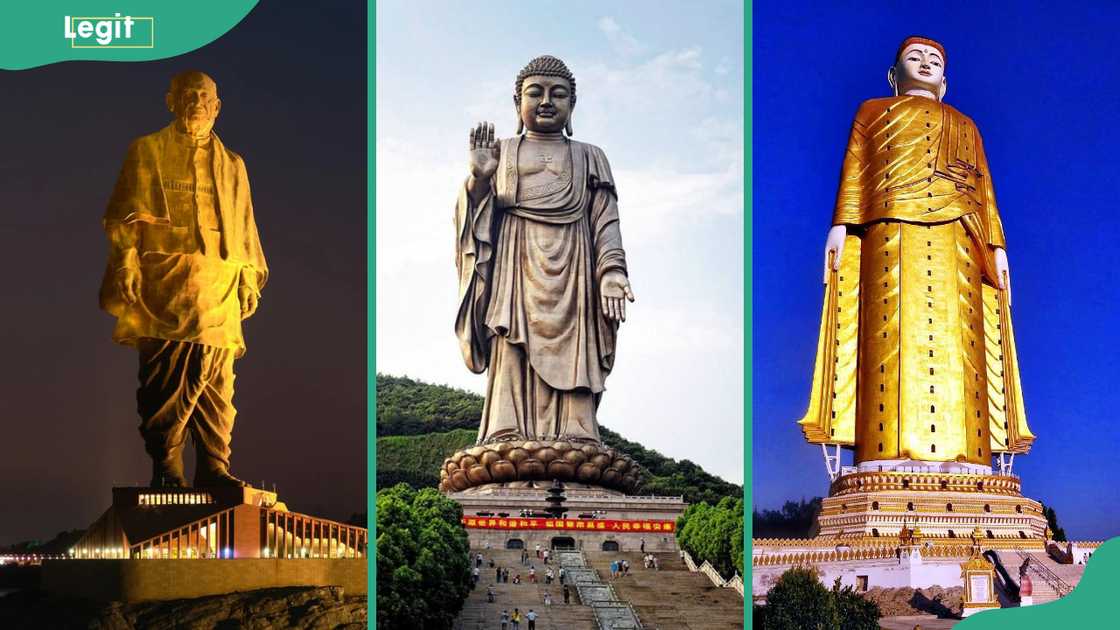
Source: UGC
In compiling the list of the tallest statues in the world, we used the most accurate records and verified details as of writing, recognising that new structures may emerge and rankings may change. This list was crafted with data and insights from trusted sources, including The Atlantic, Science Focus, and Civitatis, to ensure accuracy and depth for each featured statue.
| Rank | Statue name | Height (m) | Height (ft) | Country |
| 1 | Statue of Unity | 182 | 597 | India |
| 2 | Spring Temple Buddha | 128 | 420 | China |
| 3 | Laykyun Sekkya | 116 | 381 | Myanmar |
| 4 | Statue of Belief (Vishwas Swaroopam) | 106 | 348 | India |
| 5 | Emperors Yan and Huang | 106 | 348 | China |
| 6 | Guanyin of Nanshan | 108 | 354 | China |
| 7 | Sendai Daikannon | 100 | 330 | Japan |
| 8 | Ushiku Daibutsu | 100 | 330 | Japan |
| 9 | Guishan Guanyin | 99 | 325 | China |
| 10 | Dizang of Mount Jiuhua | 99 | 325 | China |
| 11 | Peter the Great Statue | 98 | 322 | Russia |
| 12 | Great Buddha of Thailand | 92 | 302 | Thailand |
| 13 | Grand Buddha at Ling Shan | 88 | 289 | China |
| 14 | Dai Kannon of Kita no Miyako Park | 88 | 289 | Japan |
| 15 | The Motherland Calls | 85 | 279 | Russia |
| 16 | Awaji Kannon | 80 | 260 | Japan |
| 17 | Statue of Gautama Buddha (Myanmar) | 77.9 | 256 | Myanmar |
| 18 | Guanyin of Mount Xiqiao | 77 | 253 | China |
| 19 | Garuda Wisnu Kencana | 75 | 246 | Indonesia |
| 20 | Phra Buddha Chok | 75 | 246 | Thailand |
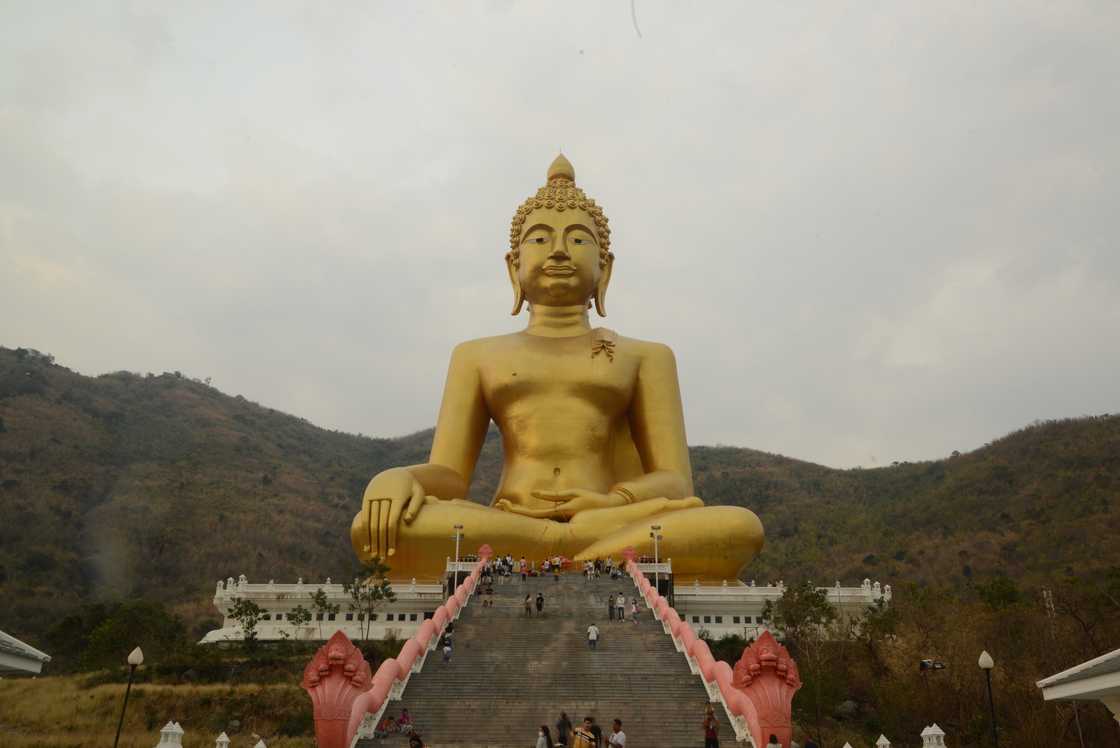
Source: Getty Images
Phra Buddha Chok rises to 75 metres. This concrete statue was completed in 2017 in Nakhon Si Thammarat. It depicts Gautama Buddha in a serene posture. The statue is located at the foot of the mountain in the Wat Khao Wong Phra Chan temple. It remains a site of deep significance and devotion in southern Thailand.
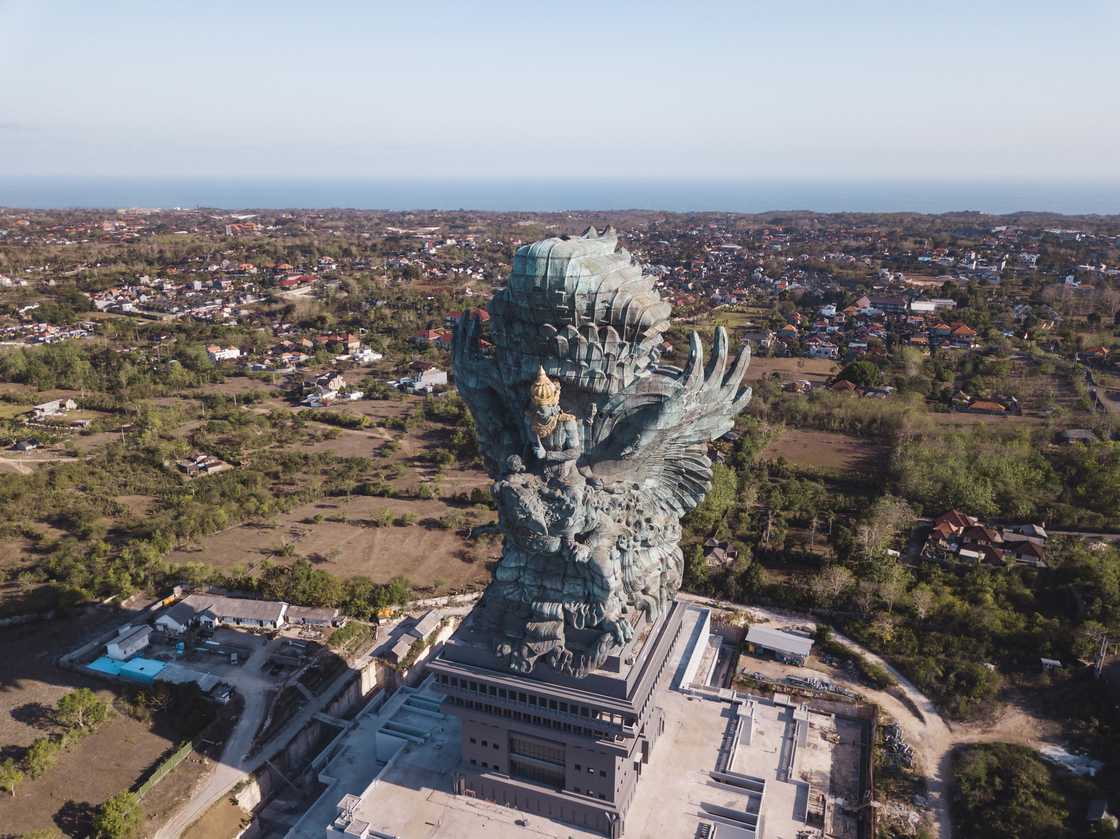
Source: Getty Images
Garuda Wisnu Kencana depicts Lord Vishnu riding Garuda. The Bali-based 75-metre statue symbolises Indonesian spirituality and culture. This gigantic statue is made of copper and a brass structure that radiates a mystical aura. It serves as an artistic masterpiece and a cultural landmark in Indonesia.
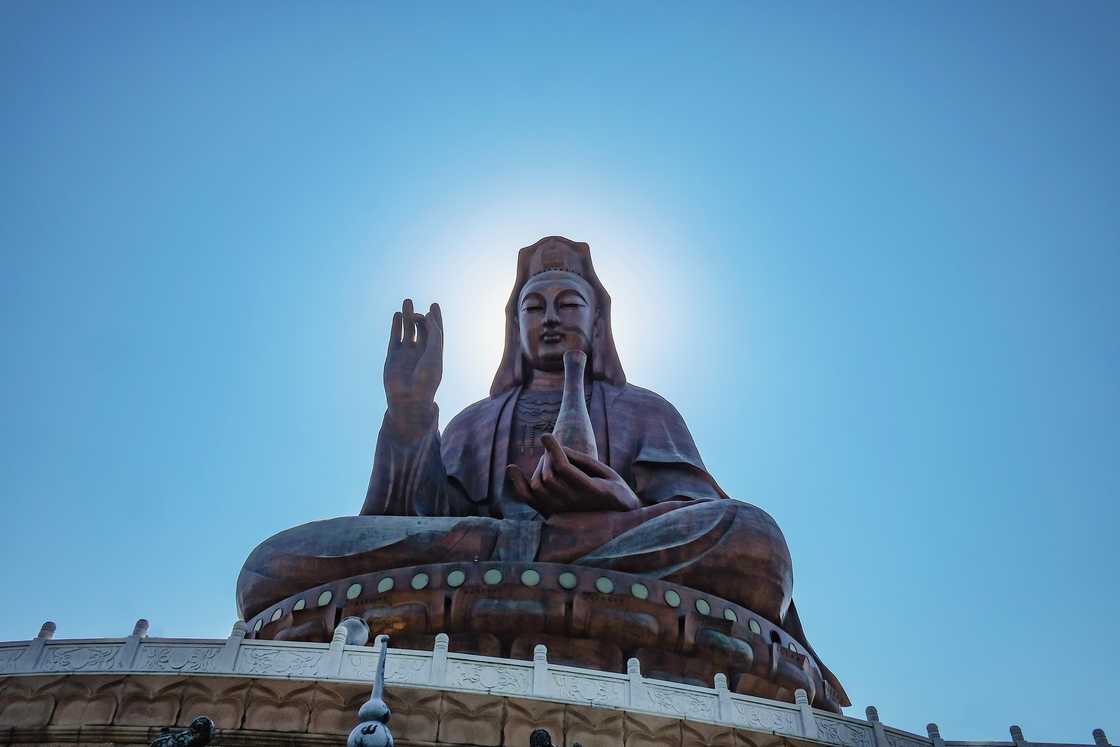
Source: Getty Images
The Guanyin of Mount Xiqiao stands at 77 metres. This bronze statue was completed in 1998 to honour the bodhisattva of compassion. The lush setting of Mount Xiqiao adds natural beauty. The site draws devotees and travellers seeking spiritual reflection.

Source: UGC
The Statue of Gautama Buddha in Kyaikhto rises 77.9 metres, radiating peace and serenity. It was completed in 2019 to mark the Buddha’s birthday. The seated figure of Siddhārtha Gautama crowns a 17-storey pagoda with elevators and shrine facilities.

Source: UGC
Awaji Kannon once adorned Awaji Island with a towering 80-metre presence. Completed in 1982, the statue depicted the goddess of mercy. Despite its cultural importance, officials demolished it in 2022 due to safety concerns.
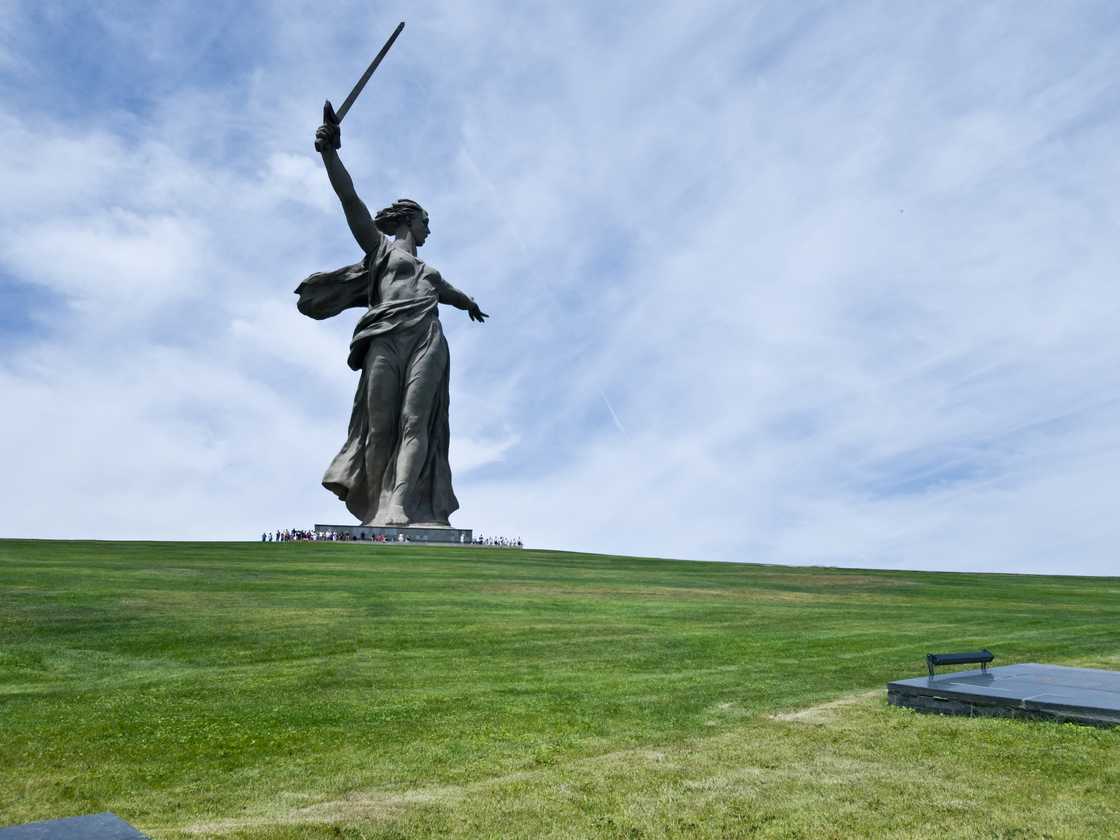
Source: Getty Images
The Motherland Calls in Volgograd embodies Russia’s resolve and bravery during World War II. With her sword raised high, the 85-metre statue captivates visitors with emotional depth and artistic mastery. This memorial was built in 1967 on Mamayev Kurgan to honour the sacrifices made in the Battle of Stalingrad.
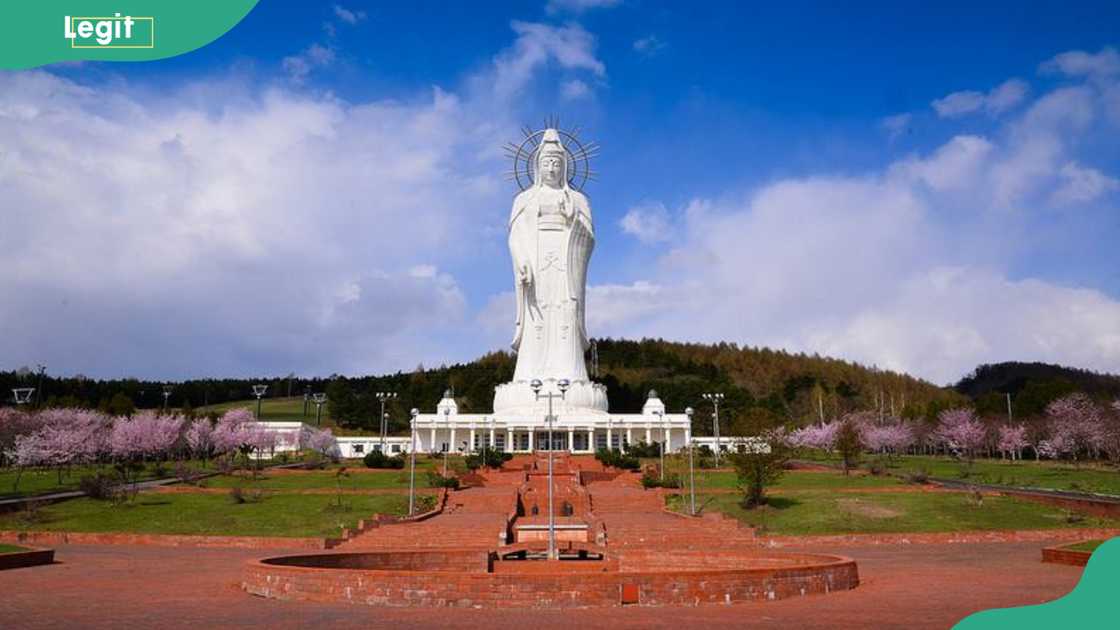
Source: UGC
The Dai Kannon of Kita no Miyako Park in Hokkaido impresses viewers with its towering height of 88 metres. Visitors can explore its multi-storey interior that houses more than 20 Buddhist statues and relics.
The imposing white structure symbolises compassion and peace and reflects Japan’s spiritual and architectural aspirations.

Source: UGC
The Grand Buddha at Ling Shan represents Amitābha Buddha. It greets visitors with a peaceful smile and an outstretched hand meant to calm the spirit. The surrounding Buddhist-themed park enhances the site’s appeal, offering a place for meditation, learning, and beauty.

Source: Getty Images
The Great Buddha of Thailand is erected at Wat Muang Monastery in Ang Thong Province. Visitors from around the world admire its gold-painted exterior and serene presence. The statue shows Gautama Buddha in a seated meditation pose and serves as a powerful emblem of Thai religious devotion.
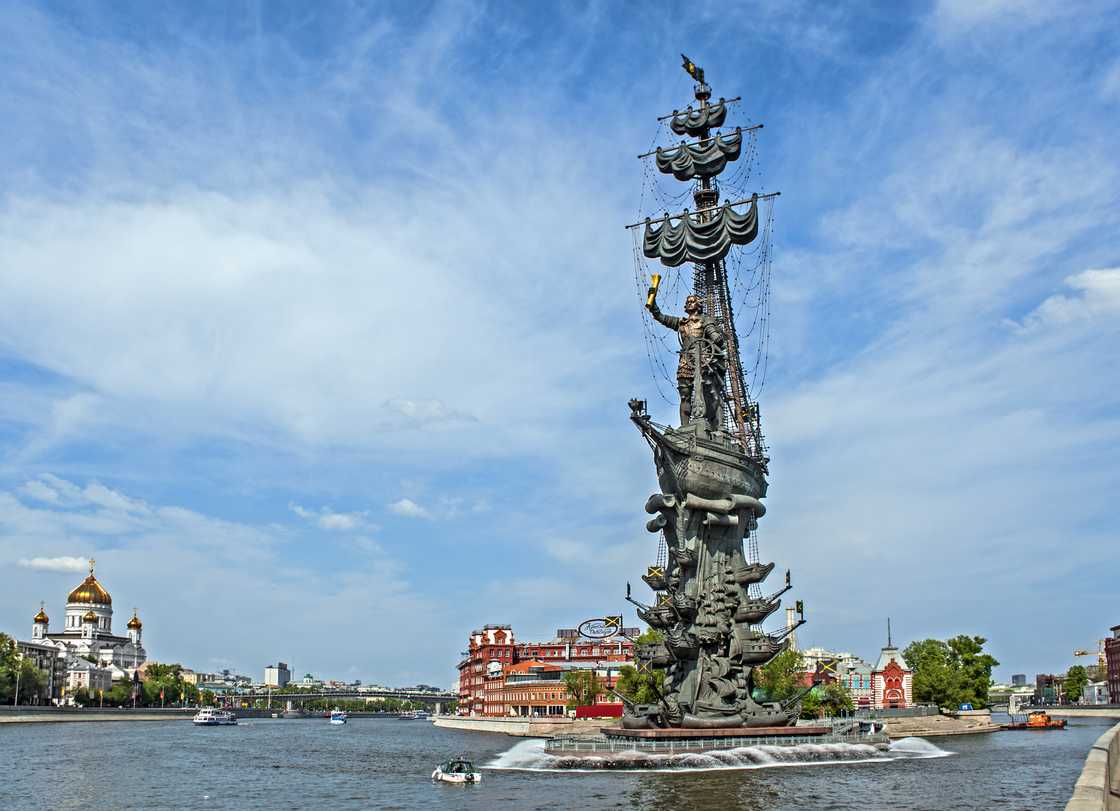
Source: Getty Images
The Peter the Great Statue in Moscow honours the legacy of Tsar Peter I. This 98-metre structure commemorates his role in founding the Russian navy. Georgian-Russian architect Zurab Tsereteli designed the statue using steel and bronze. It depicts Peter standing boldly on a ship’s prow.

Source: UGC
The Dizang of Mount Jiuhua is a copper statue representing Kṣitigarbha (Dizang), the bodhisattva known as the “Earth Treasury.” The statue symbolises protection and spiritual guidance. Its setting combines natural beauty with religious significance and draws monks and pilgrims from across the region.
The Guishan Guanyin in Hunan Province, China, depicts Avalokiteśvara with a thousand arms. The statue stands 99 metres tall. It was completed in 2009 to honour Buddhist compassion and wisdom. Guishan Guanyin is a revered landmark and a powerful symbol of cultural devotion.
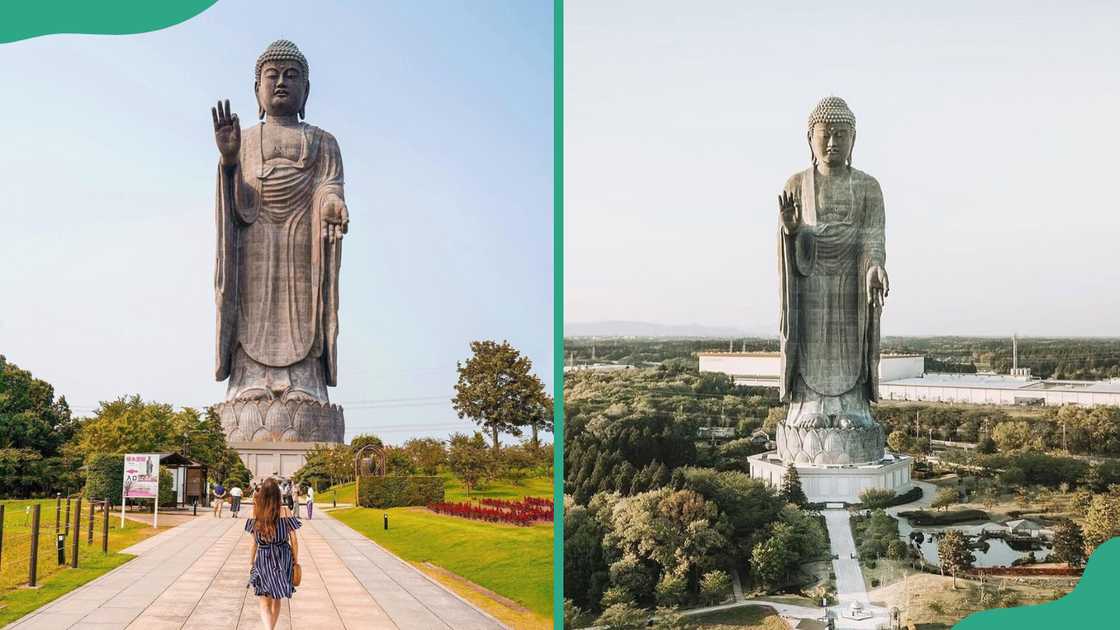
Source: UGC
The Ushiku Daibutsu is a bronze statue of Amitābha Buddha in Ushiku, Japan. It stands alongside the Sendai Daikannon as one of Japan’s tallest statues. Inside, visitors can ascend to an observation deck at 85 metres that offers sweeping views of the surrounding fields. The site remains a cherished Buddhist pilgrimage destination.
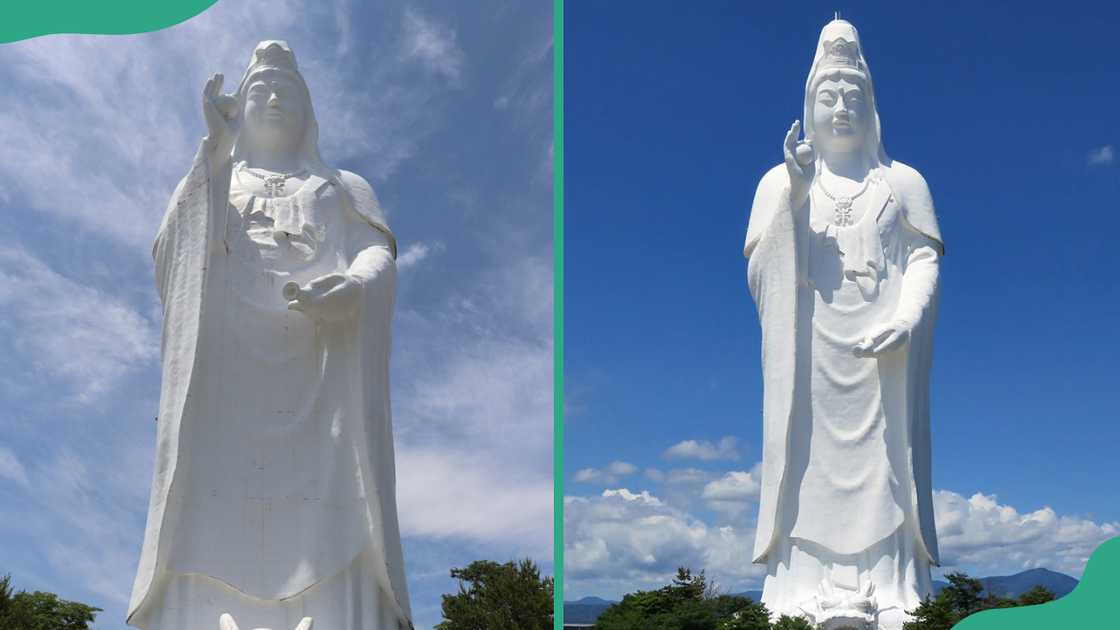
Source: UGC
The Sendai Daikannon represents Kannon, the goddess of mercy and compassion. Visitors can step inside and ascend its floors, which display many Buddhist artefacts. The pristine white exterior and serene expression make this statue a spiritual and architectural marvel.

Source: UGC
The Guanyin of Nanshan represents Avalokiteśvara, the Buddhist bodhisattva of compassion. The three distinct poses symbolise protection and peace. Set near the South China Sea, the golden-bronze structure draws visitors worldwide and promotes cultural and spiritual harmony.
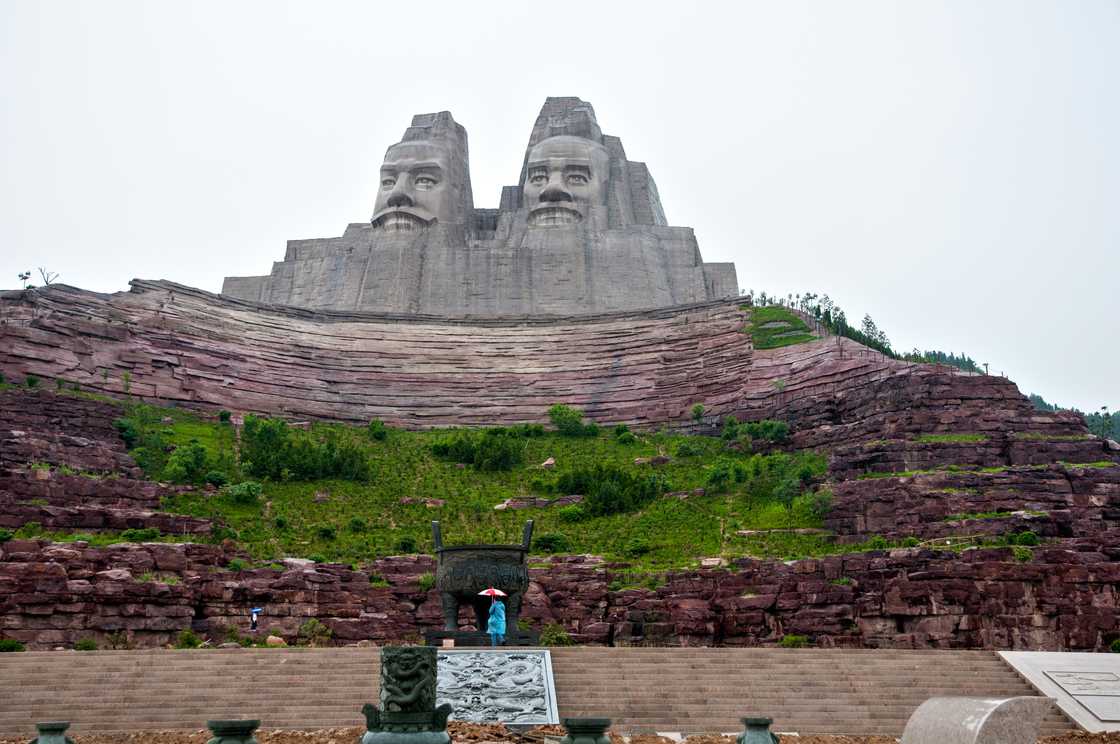
Source: Getty Images
The Emperors Yan and Huang statue in Zhengzhou, China, honours two legendary Chinese ancestors. It stands atop the Yellow River. People visit this statue to admire its intricate design, which symbolises unity and strength and holds deep cultural importance. It showcases China’s engineering mastery and draws many tourists.
The Statue of Belief, or Vishwas Swaroopam, honours Lord Shiva in Nathdwara, India. The statue symbolises divine faith and spirituality. It stands amidst the Aravalli hills and features intricately crafted details, including Shiva’s trident and serpent. The landmark offers panoramic views and includes meditation halls and viewing galleries for devotees.

Source: UGC
Laykyun Sekkya presents the image of Gautama Buddha. It was erected atop a hill that overlooks lush landscapes. A reclining Buddha accompanies the statue at the site, enhancing its importance as a pilgrimage destination. Visitors can explore 31 floors within the statue, which represent the planes of existence in Buddhist cosmology.
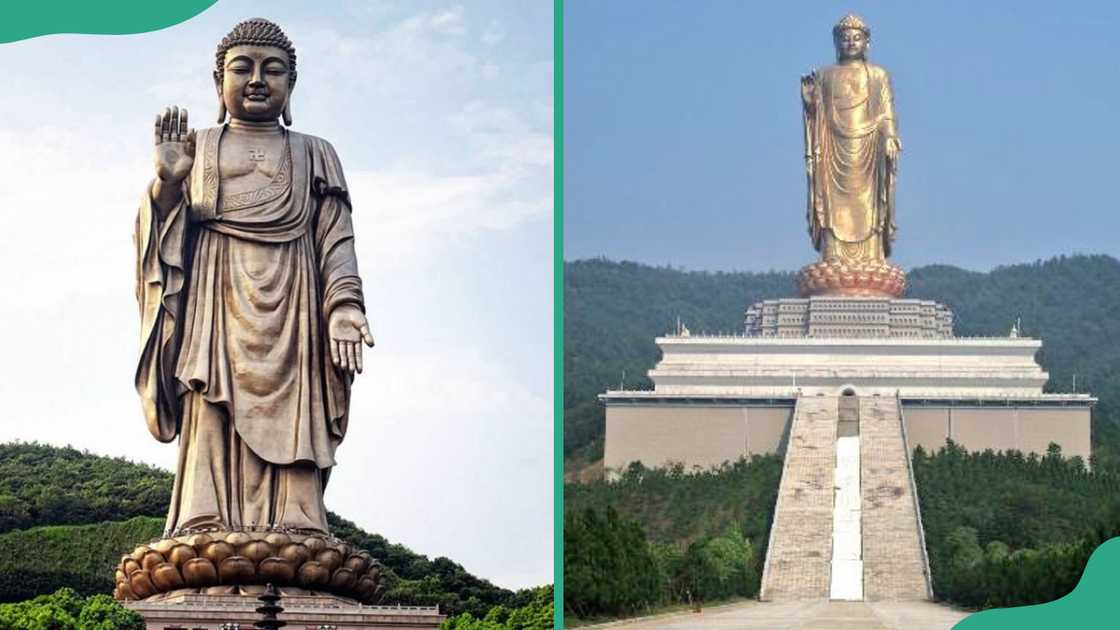
Source: UGC
The Spring Temple Buddha in Henan Province, China, ranks as the second-tallest statue in the world. It symbolises Buddhist and Chinese cultural heritage.The statue represents Vairocana Buddha and rises atop a lotus-shaped pedestal set within a complex that measures over 25 metres in height.
Its name refers to the nearby thermal Spring Temple, known for its healing waters. It is made from approximately 2,200 tonnes of copper, 1,500 tonnes of steel, and has gilded features
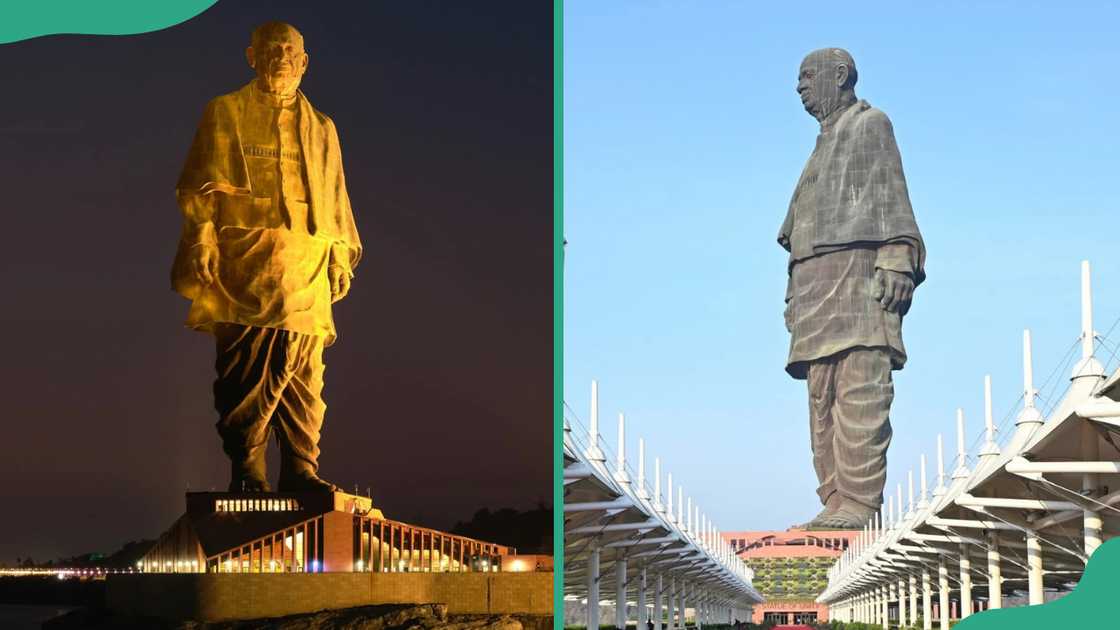
Source: UGC
- Completion year: 2018
- Depiction: Sardar Vallabhbhai Patel (India’s Iron Man)
- Material: Steel framing with reinforced concrete core and bronze cladding
The Statue of Unity is the world’s tallest statue at 182 metres. It depicts Sardar Vallabhbhai Patel, an Indian independence leader who unified the princely states. Unveiled on 31 October 2018, it stands on Sadhu Bet island in the Narmada River, Gujarat.
The statue was designed by sculptor Ram V. Sutar and built by a consortium including Larsen & Toubro. It was constructed with 70,000 tonnes of cement and 25,000 tonnes of steel. It serves as a memorial and an educational site on Patel’s legacy.
The tallest statue in the world is the Statue of Unity in India, which stands at 182 metres (597 ft). It depicts Sardar Vallabhbhai Patel, a key leader in India's independence movement. The statue, located in Gujarat, was completed in 2018.
The Spring Temple Buddha in China is the second-tallest statue in the world. It reaches a height of 128 metres (420 ft). This statue of Vairocana Buddha stands in Henan Province.
The biggest Buddha statue in the world is the Spring Temple Buddha in Henan Province, China. At 128 metres (420 ft), it surpasses all other Buddha statues in height.
From the towering Spring Temple Buddha to the serene Guanyin statues, the tallest statues in the world highlight mankind’s enduring quest for beauty and meaning. These structures not only shape skylines but also serve as focal points of cultural identity.
Legit.ng published an informative post about the oldest castle in the world. Castles are a staple in the history of the world and are primarily associated with royalty.
From medieval strongholds to grandiose palaces, these stunning wonders have served as symbols of power and played a crucial role in history. Read on to discover the ancient castles and the year they were founded.
Proofreading by Kola Muhammed, copy editor at Legit.ng.
Source: Legit.ng










